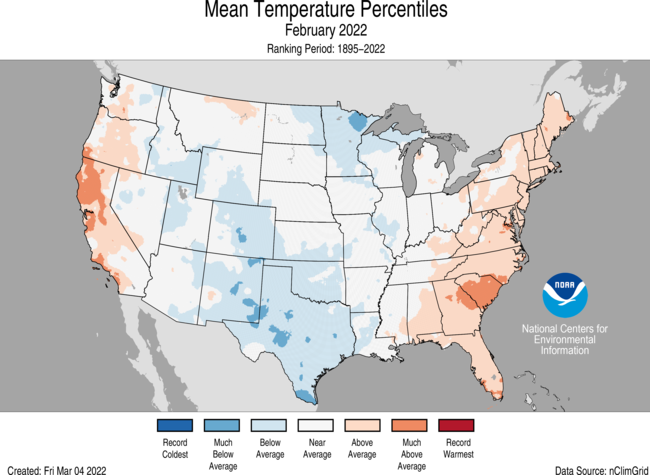The nation’s relatively dry start to 2022 continued in February with most of the contiguous U.S. in drought, the National Oceanic and Atmospheric Administration said.
The 12th driest winter in 128 years ushered in the end of the meteorological winter, NOAA said in a March 8 release. Precipitation during the month ranked in the driest third on record with 1.73 inches of average precipitation, 0.40 of an inch short of average.
“A massive winter storm stretched from Texas to Maine during the first week of February and brought heavy snow, freezing rain, ice and bitterly cold temperatures to much of the eastern two-thirds of the contiguous U.S.,” NOAA said. “More than a foot of snow fell across parts of the northeast. Fallen power lines and trees caused power outages across many states, and thousands of flights were canceled amid treacherous travel conditions.”

Almost 60 percent of the contiguous U.S. was in drought by the end of February, an increase of nearly 4 percent from the beginning of the month. Portions of the west, midwest, Great Lakes, northern and central plains and from Florida to the Carolina coast experienced expanding or intensified drought conditions, NOAA said.
The average February temperature fell 0.1-degree Fahrenheit below the average for the 20th century.
The meteorological winter, which is from December through February, was among the top third warmest on record with the average temperature 2.5 degrees Fahrenheit above average at 34.8 degrees Fahrenheit, NOAA said.







